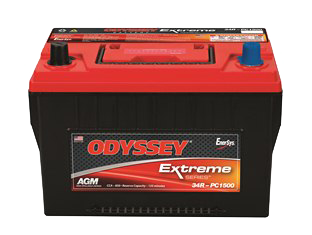So I've purchased the 50qt ARB fridge ... would anyone be able to shed some light on how long I could run the fridge without impacting the starting ability?
Maybe it's because my background is boats, but I'm used to the starting battery being "sacred," and reserved for starting only. I suppose I might fudge a bit with a land vehicle, especially if it had a clutch (pop start) and/or I had a couple of jump packs (and wasn't going to be anyplace too remote). But likely not. Even if the start battery was not dragged down to a no-start condition, it would still be hard on it to be discharged deeply on a regular basis (it's hard on a deep cycle battery and they are meant for it). Plus you'd have no way of knowing (since no battery monitor).
I rigged up a setup for a friend's car a few months ago that consisted of a 100-watt solar panel on the roof rack (overkill, but he had a spare panel), and then a small box with a Lifeline U-1 battery and MRBF (possibly underkill on battery size but he thought a Group 24 would be too physically large although it turned out it would have been fine), a Victron 75/15 solar controller, and two 12-volt "cigarette" outlets (also fused). One of those was for a Dometic 40 liter refrigerator and the other just for whatever. This has worked great and was pretty simple to set up. If there is ever a situation where there is a lack of sun for many days, the fridge would be turned off (due to smallish battery bank) but it's fine for an overnight or maybe two in cool weather (he hangs in sunny climates). There is also the option to plug it into the car's cigarette outlets when underway. He made a conscious choice not to connect the two banks with a switch or automatic relay (because he had the solar panel and controller already, so just needed to buy a battery and voila!), but that would have been an option. As it is the refrigerator/"house" system is simple and stand-alone -- and can't touch the car's start/native electrical system (yet allows him to take advantage of alternator power by simply plugging the refrigerator into the car's native cigarette lighter if desired when traveling [say if traveling on a string of rainy days]).
We did some tests (plus I run a Dometic 50 liter 24/7 and so already had some idea of power use) and the Dometic 40 is using something like 12-15 amp hours overnight in warm but not ridiculously hot conditions. Of course this is only when the sun is down, so the car is not "greenhouse hot." And when it IS greenhouse hot, the solar panel is active. IIRC the U-1 has 35 amp hours, so it's close but still okay (as mentioned, he would go with Group 24 if doing again most likely).
The box is quite small and fits in the rear passenger seat footwell up against the center hump (still room for feet on an ocassional basis). I realize you may not want to go that way specifically, but I would be uncomfortable using the start battery for anything but very occasional use (say when running errands you buy ice cream and then leave the fridge on while you do some other tasks that same afternoon, then drive more).



